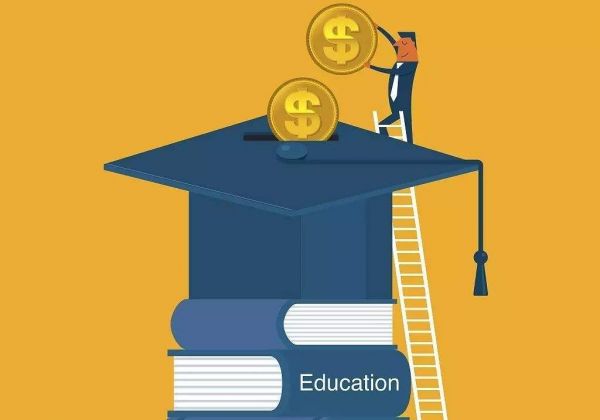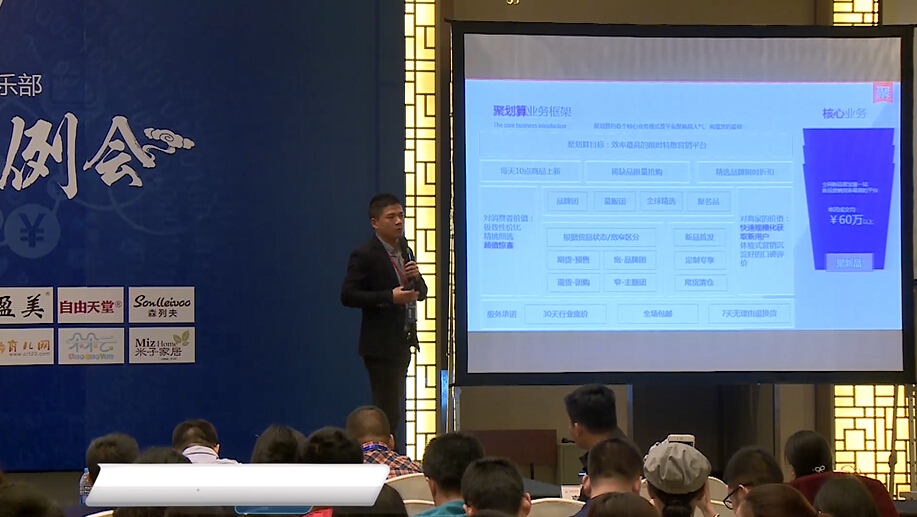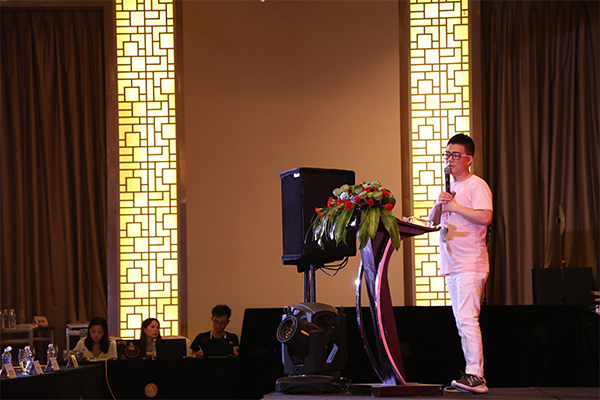Knowledge payment is not called "knowledge social", but after the marketing that has flooded WeChat Moments, knowledge payment platforms have been very successful in the parallel model of "distribution + marketing". Trying to find the answer to the crazy "sinking the screen" of knowledge payment platforms, you might as well review the three familiar products: Internet celebrity e-commerce Pinduoduo, once popular live answering questions, and now popular game mini-programs.
The golden rule of "social+"
When the traffic dividend disappeared and became a consensus, Pinduoduo achieved a terrifying scale of 40 billion in less than three years. Compared with "traditional e-commerce" such as Taobao and JD.com, Pinduoduo's innovation can be attributed as follows:
First of all, there is a group buying. The original price of 59 yuan is only 39 yuan through the group buying. Users can share the group buying links to social channels such as friends or WeChat groups;
The second is bargaining. If the product link is sent to a friend, the corresponding cut price will be displayed after clicking the link, and the product will be obtained in a lower or free form;
Another thing is sharing. Pinduoduo's operating activities are full of "drawing a prize for 1 cent", "receiving cash every day", "cash sign-in", "helping to enjoy free orders", etc. The participation threshold is the sharing link to friends.
The once popular live answering questions also has a clever setting. Users can share the exclusive invitation code with their friends and get a chance to resurrection; this has been inherited on game mini programs such as "Pinball King" that have been popular in various WeChat groups recently. After the game ends, you can share it with different WeChat groups in exchange for the chance to resurrection.
It is not difficult to summarize the common keywords from it, namely social fission. As traffic becomes more and more concentrated and the competition threshold is getting higher and higher, try to build social relationships as much as possible and fission into viral transmission through repeated sharing and forwarding, which is a shortcut to traffic acquisition. Although Tencent has set almost harsh standards for this, such as not allowing induced sharing, not allowing interest temptation, and not allowing exaggerated copywriting, "social +" has become the golden rule in the minds of many operators, and one batch of paid knowledge courses after another is no exception.
E-commerce of knowledge payment
The purpose of knowledge payment is to flood the screen one round after another, probably not to become parasitized on social platforms such as WeChat, but to point to the fact that taking advantage of traffic is just a means, and e-commerce is the way to go.
Someone has summarized several major characteristics of knowledge paid courses that flood the screen:
1. Red background and large characters "supermarket" are posters;
2. 10W+, many popular products;
3. Scan your code and give me the money;
4. Miss one day and wait for another year;
5. Utilitarian communication copywriting.
This slightly sarcastic summary is not without reason. Posters, hot products, copywriting, limited time, etc. are all common means for e-commerce operations. As for the "distribution" sales model, on the one hand, it is the most effective way to obtain traffic at present, and on the other hand, it also has marketing support factors, and it even assumes the mission of transitioning from knowledge payment to e-commerce development.
When the knowledge payment was still in a chaotic period, there had already attempts to "distribute", typical of which was Fan Deng, who was well-known to the outside world for Luo Zhenyu. Founded in 2013, "Fan Deng Reading Club" has tried to play the game of selling membership cards through local agents, sign agency contracts with companies with independent legal person qualifications in various places, and distribute half of the sales to agents. By the beginning of 2018, the number of registered members of "Fan Deng Reading Club" had nearly 6 million, the actual paid members reached 3 million, and more than 1,500 branches were established around the world, with annual revenue of over 100 million.

If the rise of "Fan Deng Reading Club" relies on offline mode, players such as NetEase Cloud Classroom and Himalaya have more so-called Internet thinking.
"NetEase Operation Methodology" original price is 199 yuan, the promotion price is only 39.9 yuan, and it adopts a distribution model;
Before being overwhelmed by saliva, Xinshixiang also successfully operated the fine class "Becoming an Irreversible Person". With a price of 99.9 yuan and first-level distribution, you can get 49.9 yuan;
The "Minimal Logic of Knowledge Payment" launched by QianLiao also adopts secondary distribution. First-level distribution can receive 70% commission, and second-level distribution can receive 20% commission...
Judging from the results, the number of participants in "NetEase Operation Methodology" is more than 200,000, Xinshixiang's workplace classes were sold in nearly 80,000 within 24 hours, and Qiandao's courses were quickly sold to 100,000. At the same time, a series of chain reactions occurred. NetEase's first-year course was blocked by WeChat and then unblocked. After Qiandao's sharing link was blocked by WeChat, it also caused its APP to be removed from the App Store.
Like Pinduoduo in the e-commerce field, as traffic costs are becoming increasingly expensive, it uses the idea of "distribution" to open up social relationship chains, and then completes low-cost new recruitment. At the same time, like early e-commerce, after the knowledge paid courses grew wildly, whoever gets more traffic, or the method of obtaining traffic at low cost, undoubtedly has a higher chance of winning.
Distribution is the inevitable payment for knowledge
Strictly speaking, the existence of the distribution model does not lack rationality. Offline agents and stores are the key roles in the e-commerce industry chain such as rebate network, and their value is also distribution. The reason why "distribution" has become a "sensitive word" for knowledge payment and is questioned about the attributes of pyramid schemes is also attributed to the misalignment of public perception.
For example, if someone buys a distribution course of 50 yuan through the poster you share, you can get a certain share. This is also the key to the "distribution" model of knowledge payment being questioned for pyramid schemes. The premise that needs to be clarified is: Is the knowledge paid course itself a commodity? If the answer is yes, it is essentially no different from the rebates and shopping guides of e-commerce platforms. Whether it is Toutiao, Alibaba Mama or JD.com, they all have similar business models. If the answer is no, major knowledge payment platforms may have been sealed off long ago.
At least for the moment, there is a steady stream of knowledge paid courses, and the distribution model has been imitated by most players, which is inseparable from three inevitable trends:
When free is rampant, payment is inevitable.
In a report, iResearch divides knowledge sharing into three stages: static knowledge platforms such as Baidu Encyclopedia and interactive encyclopedia, dynamic knowledge communities such as Baidu Know and Zhihu, and then knowledge monetization platforms such as in-line and answers. Of course, there are many players from the previous stage in the third stage, such as NetEase Cloud Classroom, Himalaya, Zhihu, etc.
What is certain is that the free knowledge stock on the Internet is much higher than that of libraries in various countries, and what you pay for is often one of them. But when knowledge is free and overflowing, time becomes a scarce product. Faced with a huge ocean of knowledge, it tends to use less time to obtain the knowledge needed. This determines the early product form of knowledge payment, either empirical sharing, skill-based teaching, or secondary processing of fragmented knowledge. It also determines the business form of knowledge-paid products, and needs to find the buyer quickly and accurately.
When knowledge payment becomes a business, industrial chainization is inevitable.
Nowadays, the outside world's discussion on knowledge payment has long been upgraded to "Is knowledge payment a good business?", and there is almost no doubt about the legitimacy of knowledge payment. When knowledge payment becomes a business, industrial chainization is inevitable, and content producers, platform managers, sellers and consumers perform their respective duties.
The reliance of knowledge-paid courses on the "distribution" mechanism is precisely a manifestation of immaturity, and it is precisely because of the lack of a complete industrial chain that has put pressure on one of the links. It is also an inevitable process for knowledge payment to conduct market education. Platforms of knowledge payment can fully perform regular gameplay, but the price is that the entire industry is likely to be nipped in the bud. Without continuous traffic and revenue, content producers will inevitably find it difficult to persist . From this perspective, there are many reasonable explanations for the early stage of knowledge payment, such as entertainment and screen sweeping.
When the market is chaotic to a certain extent, elimination and optimization are inevitable.
Knowledge payment has not been around for a long time, and its focus has changed a few times, including paid Q&A, paid communities, paid audio and paid courses in different forms. Knowledge payment is not an eye-catching economy. What operations face is not only the problem of attracting new things, but also a series of assessment factors such as opening rate, completion rate, and repurchase rate.
For this reason, knowledge payment has to go through a long trial and error period. With the continuous enrichment of knowledge payment products, it has begun to extend to vertical fields such as literature and history, finance, parent-child, foreign language, and art. However, while product diversification and big explosions, it also means further dispersing traffic, and inevitably reshuffle round after round, and finally eliminated knowledge paid products that meet the needs of the public and business models that meet the consumption habits of the public.
This is not difficult to explain the time node when the distribution model is popular. Knowledge payment has gone through the early stage of market education, and industrial chainization and business model optimization will be the focus of the next stage . In the successive attempts of knowledge payment, the distribution model finally stood out. However, for knowledge-paying players, distribution can easily induce speculation and a share of the mentality, and may gradually lose space for survival.

Knowledge payment still needs to be evolved
As consumers, we can allow knowledge payment platforms to make mistakes with an inclusive attitude, but for knowledge payment players, how can users willingly pay? How to make a change after the time dividend ends? The distribution model is not lacking in rationality, but there are still some discord in the market. We also need to think about the direction of evolution from the course itself:
Deutilitarianization of knowledge paid courses
Some people say that the "anxiety" of the middle class is the inducement of knowledge payment, and the market is also full of paid content such as "the road to wealth" and "XX days to learn XXX". The identity anxiety, competition anxiety, security anxiety, wealth anxiety, etc. of the middle class may become the user itch point targeted by knowledge payment, and de-anxiety is an inevitable choice for knowledge payment to get rid of "knowledge scammers".
From focusing on marketing to focusing on business
The traffic climax brought by the distribution model is enough to excite countless participants. The fatal problem is that users' attention is transitioned to focus on distribution profits and marketing, and course content has become a secondary factor. Marketing success is a good start. How to carry out continuous user management and solve the pain points criticized by the outside world such as opening rate and repurchase rate is the problem that knowledge paid courses cannot be escaped.
A reasonable pricing mechanism
The original price XXX, limited time price XX, and the price XX after distribution can be said to be the essence of knowledge payment learning from e-commerce operations, and it is also one of the guarantees of traffic. After this stage has passed, how to make users have a rational price awareness of knowledge payment courses, making content consumption a trend.
Cultivate accurate audiences
Almost all knowledge paid products are casting a wide net. How to accumulate loyal users and provide targeted high-quality content also requires thinking.
Continuously create high-quality content
Most knowledge payment platforms rely too much on celebrities and big Vs, lack clear content screening mechanisms, and lack the upward channels for "grassroots big Vs".
Solve user attention problems
Many people think that knowledge payment is a false need, and the argument is that the knowledge payment courses do not have obvious learning effects. Under the existing model, either pure listening or video viewing is all at the level of passive learning, and the knowledge retention rate can be imagined. Of course, it is difficult to pay for knowledge like high school classroom-style teaching and practice, otherwise it will evolve into online education, but from one-way teaching to two-way communication is an inevitable trend, and this is used to solve the problem of scarcity of users' attention.
The Inspiration of "Invisible Poor People"
A new term is popular: "Invisible Poor People", which refers to those who seem to have food, drink and play, but are actually very poor. Invisible poor people with skills such as operations, marketing, and technology may be the most important group of people who should focus on knowledge payment. They do not lack a certain professional foundation and are in an embarrassing situation of "learning but not being good at it". Compared with novices, these talents are the first batch of users that knowledge payment players should occupy.
Perhaps you can list a formula: recognized business model = stable traffic * accurate audience * excellent products . Pinduoduo has gotten out of the dilemma of public opinion and then towards the embrace of capital, which lies in opening up the complete links of traffic, products and users. All the process of knowledge payment has just begun. In order to solve the traffic problem, the distribution model is an unreasonable choice, but there is still a long way to go in terms of content and user management.








 EN
EN CN
CN
